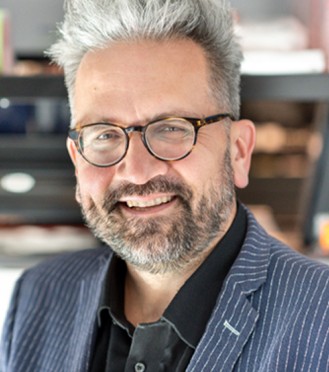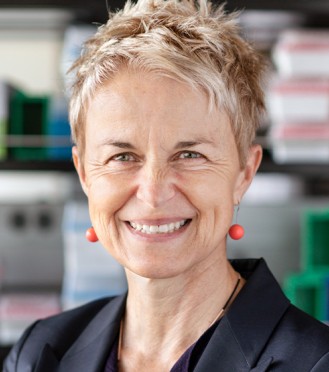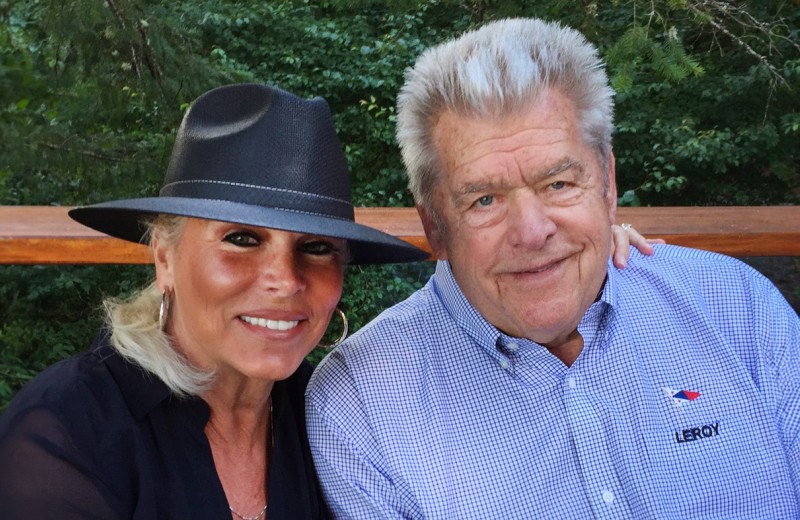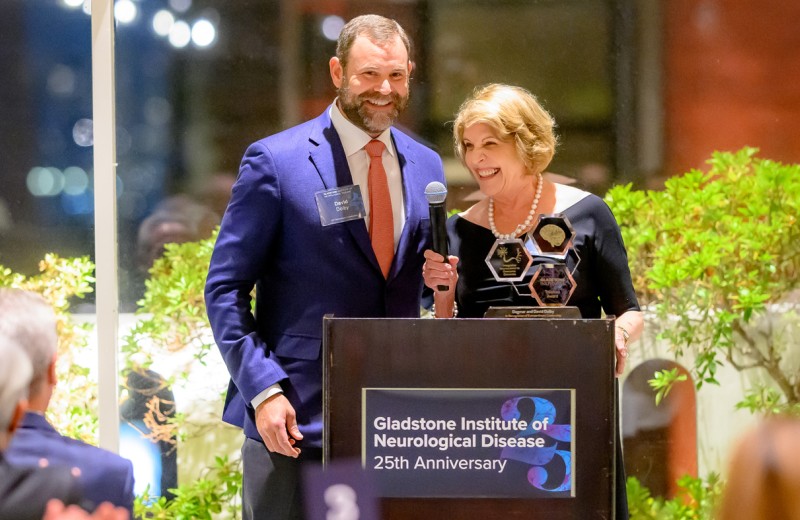Gladstone NOW: The Campaign Join Us on the Journey✕
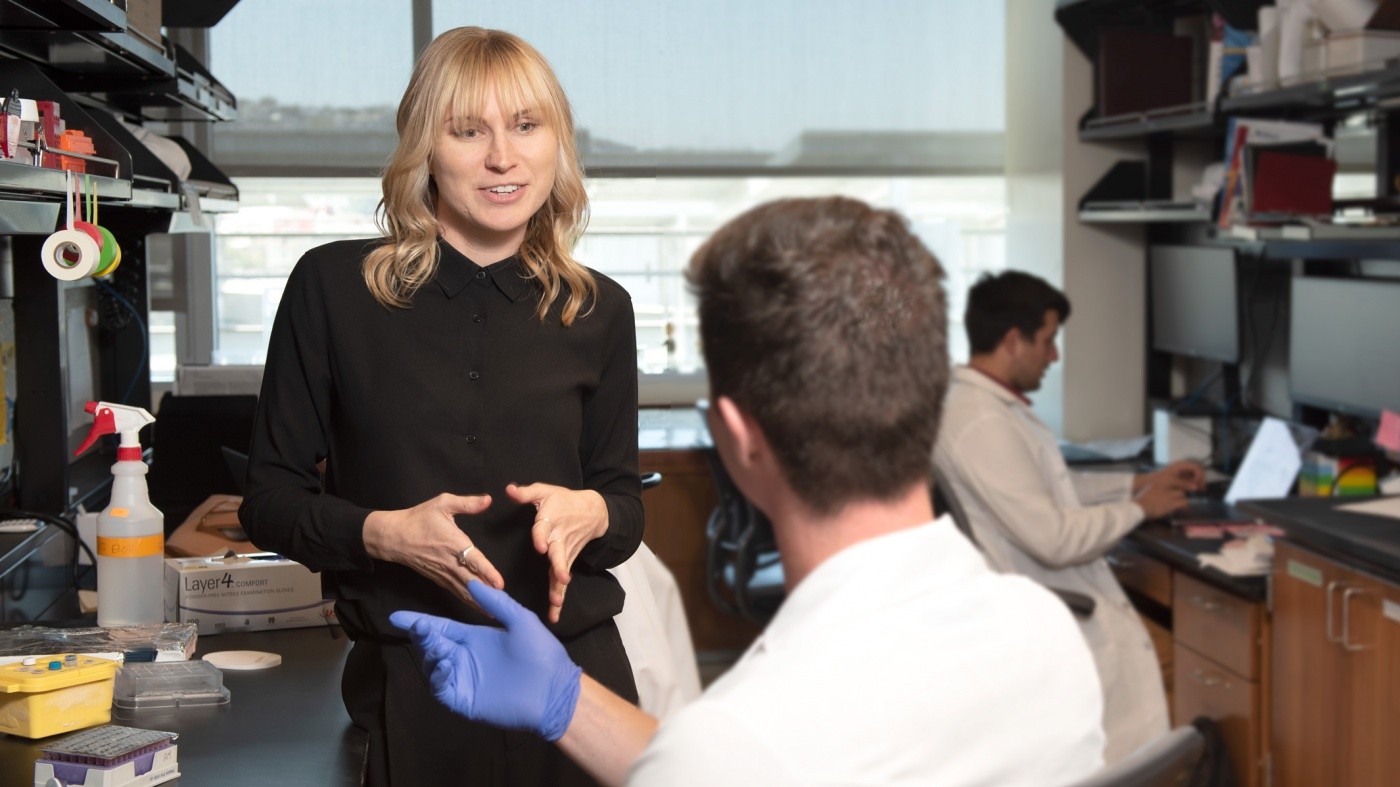
Krystal Fontaine was offered a new position at Gladstone, with support from the Hearst Foundation, to help her springboard from her postdoctoral training into her future career.
When Krystal Fontaine neared the end of her postdoctoral training, she began considering her future career options, as many others do. With her background in studying viruses, she knew she wanted to remain in science to help find treatments for infectious diseases that affect millions of people all over the world. Yet, advancing in academic research isn’t always simple given the scarcity of available faculty positions.
“I thought about becoming a project leader for a non-profit foundation focused on the same pathogens I was interested in,” explains Fontaine, PhD. “But whenever I found job openings, they had distinct requirements for several years of experience leading teams of a certain size or managing very large budgets. I knew that I wanted a position with that level of responsibility, but I didn’t know how I would go about gaining the necessary skillset.”
Fontaine’s situation is a common one.
At present, becoming a professor is the main career path within educational and research organizations open to those who complete their postdoctoral training, and very few such positions open each year. Due to this lack of faculty positions—and with very few opportunities for transitional roles—so many postdoctoral scholars move from the non-profit environment to for-profit organizations, or leave science altogether.
To address this systemic issue, Gladstone Institutes began creating new positions with the goal of developing a more robust career track for young scientists. Last year, the Hearst Foundation decided to support this initiative in recognition of this growing need.
As a result, Fontaine was offered a new position of scientific program manager to oversee the BioFulcrum Viral and Infectious Disease Research Program at Gladstone. This large-scale research project takes a unique approach to treating viral and infectious diseases by focusing on human host proteins rather than targeting specific viruses or bacteria.
“While science education is focused on critical thinking, technique, and communication, it all too often fails to include proper training in scientific management, which is a critical skill for young scientists as they progress in their career.”
“It was serendipitous, because I was looking to have an impact in science without having to follow the traditional academic route, but I had no idea what that position could look like,” says Fontaine. “And here was Gladstone, giving me a chance to be a part of something much larger than anything I could have realistically done within my own research group. It was a very exciting—and intimidating—opportunity.”
Fontaine’s role is to accelerate research that could lead to the development and commercialization of therapeutic, diagnostic, or preventive remedies within the BioFulcrum program. She is coordinating work conducted in six laboratories across Gladstone, UC San Francisco (UCSF), and UC Berkeley.
“We decided to be proactive and start developing a framework to keep talented postdocs at Gladstone by offering them roles with a better salary and more responsibility, which they can use as a stepping stone to advance their career,” says Melanie Ott, PhD, senior investigator at Gladstone who is co-leading the BioFulcrum program. “I think this can open many doors for our postdocs in the future.”
Judd Hultquist, PhD, can personally attest to this. When he was a postdoctoral scholar in Nevan Krogan’s laboratory at Gladstone and UCSF, he was offered the same position as Fontaine. They worked together to develop the BioFulcrum research program, outline its major milestones, and determine the required budget.
“While science education is focused on critical thinking, technique, and communication, it all too often fails to include proper training in scientific management, which is a critical skill for young scientists as they progress in their career,” says Hultquist, who is now an assistant professor running his own research group at Northwestern University. “The position at Gladstone, enabled by a generous gift from the Hearst Foundation, allowed me to learn essential leadership skills in a supportive environment in everything from personnel recruitment to budgetary planning to effective time management. These skills proved invaluable to me as I progressed to my current position.”
Fontaine continues to oversee the BioFulcrum program on her own. In this role, she has an opportunity to mentor and help develop younger scientific minds, while also pushing science to a level beyond what she could have imagined doing on her own.
“It’s been a truly rewarding experience,” Fontaine says. “I’m so proud to help lead a research program of this scale that involves some of the best scientists in the world within their respective fields. I also enjoy combining academic science with industry partnerships, knowing that our discoveries could lead to new therapeutic avenues.”
With the advent of new research technologies in biomedical research, many research projects require coordination between multiple laboratory groups who share instruments, knowledge, and massive data sets. Positions like the one held by Fontaine are becoming essential to meet this growing need.
“At Gladstone, we strive to provide the best training for young scientists,” says Gladstone President Deepak Srivastava, MD. “We also recognize that the grants we rely upon have not yet adjusted to define, create, and facilitate dynamic career development paths for postdoctoral scholars who might be searching for non-faculty positions within academia. We are thankful for the support we received from the Hearst Foundation, and hope the success of our program will lead other organizations to follow, eventually providing new opportunities for many more young scientists worldwide.”
For Fontaine, this new program allowed her to gain the experience she will need to take on her next leadership position, in whatever shape that comes.
“I’m so grateful that Gladstone had the vision to create unique positions for scientists like me that they’ve spent years training,” says Fontaine. “I’ve learned so many skills, some I always knew were necessary and others that hadn’t yet come to mind. I couldn’t have dreamed of a better springboard out of my postdoctoral training, and I’m very thankful for this extraordinary opportunity.”
“I hope Gladstone, and many other organizations, will continue to create positions like this for postdocs who want to continue a career in the non-profit sector,” she adds.
Support Discovery Science
Your gift to Gladstone will allow our researchers to pursue high-quality science, focus on disease, and train the next generation of scientific thought leaders.
Embracing Change: Darlene Hines Shares Her Journey of Growth, Resilience, and Giving Back
Embracing Change: Darlene Hines Shares Her Journey of Growth, Resilience, and Giving Back
Longtime Gladstone supporter Darlene Hines reflects on her journey of learning, growth, and giving after her husband’s passing
Donor StoriesVisionary Philanthropists Establish Center to Harness Computational Biology for Cancer Research
Visionary Philanthropists Establish Center to Harness Computational Biology for Cancer Research
A search for the brightest minds in cancer and AI led Hope and Sanjit Biswas to give in their own backyard.
Philanthropy Donor Stories Cancer Biswas Center for Transformative Computational Cancer Biology Data Science and Biotechnology Pollard Lab AI Big DataThe Risk and the Reward
The Risk and the Reward
How the Dolby family works to improve outcomes for people with Alzheimer’s disease
Donor Stories Alzheimer’s Disease

